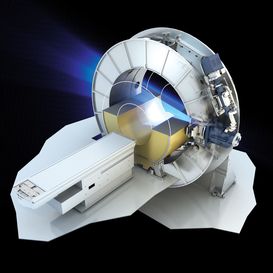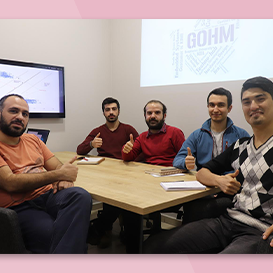ITEA project results enhancing people's lives
Tumour in sight during radio treatment
The ITEA projects SoRTS and STARLIT addressed image-guided radiotherapy, by improving the real-time connections between a Philips MRI scanner for imaging and an ELEKTA LINAC system for radio treatment.
The availability of MR images, with low latency, during radio treatment, allows a more precise treatment, leading to several benefits for the patient. Most importantly, this enables a precise treatment as the tumour is constantly ‘in sight’ during the radio treatment. Consequently, less healthy tissue is damaged, supporting a reduction of necessary radiation sessions. The predecessor of STARLIT, the ITEA SoRTS project ,already provided the connection, to ensure more precision but this supports only gating. This means that the radiation is shut off when the tumour moves out of the beam. This version of the MR-LINAC is available at more than 60 places in the world for patient treatment, and the order intake is increasing. STARLIT improves the results of SoRTS by reducing the latencies even more, allowing the tumour movement to be followed with the beam. In addition, during treatments, the delivered dose is measured. These improvements will become available as upgrades for the installed base in the coming years.
Unfortunately, the project leader himself needed radio treatment, during the last year of the project. The traditional treatment would have involved 20 treatments in four weeks. However, the MR-LINAC treatment, based on the SoRTS project results, offered a treatment of five sessions in 20 days. This reduced the burden of travelling to the hospital substantially, and also the side-effects, like fatigue, were much less. As less tissue is damaged, the recovery time in general is also much shorter. In fact, he was even able to work about half of the time in these 20 days, instead of being out of work for four weeks. Also possible discomfort, like being partially out of action for a few months, did not occur with the MR-LINAC treatment. As a result of the STARLIT project, the number of treatments will even reduce more and consequently also further reduce the side-effects and burden for patients in the future.
In addition to the clear benefits that the MR-LINEAC treatment offers patients, there is also a strong benefit for hospitals. As fewer treatments are needed per patient, they can treat much more patients in the same time.
ITEA 3 project
SoRTS & STARLIT
Other articles
Use the arrows to view more articles

Editorial
By Jan Jonker

Country Focus: Canada
Connecting companies to enable access to new markets and global value chains

QA Consultants
Future-proofing our company

ITEA Success story: C³PO
C³PO democratises City Planning

Viewpoint on entrepreneurship
Innovare - to make new again

End user happiness: SoRTS and STARLIT
Tumour in sight during radio treatment

New ITEA Vice-chairman: Jean-François Lavignon
The new helmsman at the wheel

ITEA Success story: ACOSAR
An innovative simulation that saves time and money

SME in the spotlight: GΩHM
Embedded intelligence to improve quality of life

The Smart City Business Event
The Road to Smart City Live

State of the Art
A compass for your projects

Online ITEA PO Days
ITEA Community clearly showed its agility at the Online ITEA PO Days 2020



